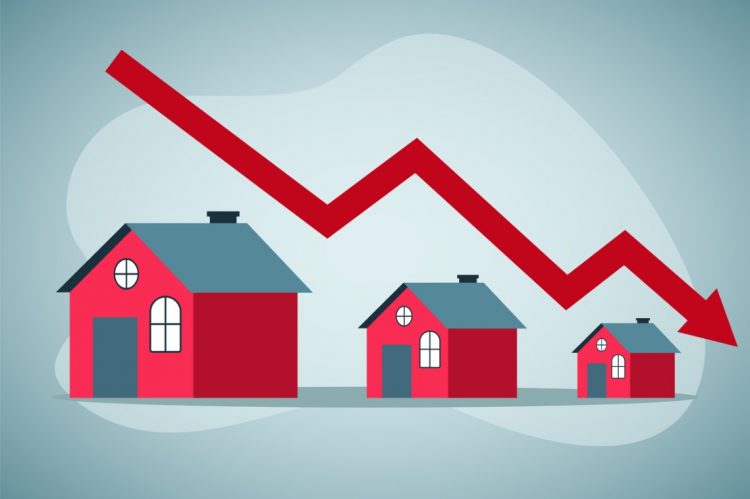Existing home sales decreased 4.1% from September to a rate of 3.79 million in October, according to a new report from the National Association of REALTORS®. Year-over-year, sales fell 14.6% (down from 4.44 million in October 2022).
NAR’s Existing Home Sales report for October found that total housing inventory was 1.15 million units, up 1.8% from September but down 5.7% from one year ago (1.22 million). Unsold inventory sits at a 3.6-month supply at the current sales pace, up from 3.4 months in September and 3.3 months in October 2022. The median existing-home price for all housing types was $391,800, an increase of 3.4% from October 2022 ($378,800).
In addition, all four U.S. regions experienced year-over-year sales declines and registered price increases.
The data:
- Properties typically remained on the market for 23 days, up from 21 days in September and October 2022. 66% of homes sold were on the market for less than a month.
- First-time buyers were responsible for 28% of sales, up from 27% in September and identical to October 2022. NAR’s 2023 Profile of Home Buyers and Sellers found that the annual share of first-time buyers was 32%.
- All-cash sales accounted for 29% of transactions, unchanged from September but up from 26% in October 2022.
- Individual investors or second-home buyers, who make up many cash sales, purchased 15% of homes, down from 18% in September and 16% one year ago.
- Distressed sales—foreclosures and short sales—represented 2% of sales, virtually unchanged from last month and the previous year.
- Single-family home sales declined to a seasonally adjusted annual rate of 3.38 million, down 4.2% from 3.53 million in September and 14.6% from the previous year. The median price was $396,100, up 3% from October 2022.
- Existing condominium and co-op sales recorded a seasonally adjusted annual rate of 410,000 units, down 2.4% from September and 14.6% from one year ago. The median price was $356,000, up 7.6% from the prior year.
Regional breakdown:
- Sales in the Northeast dipped 4.0% from September to an annual rate of 480,000, down 15.8% from October 2022. The median price was $439,200, up 7.5% from the previous year.
- At an annual rate of 930,000, sales in the Midwest were unchanged from the prior month but down 13.9% from one year ago. The median price was $285,100, up 4.2% from October 2022.
- Sales in the South retracted 7.1% from September to an annual rate of 1.69 million, a decline of 14.6% from the previous year. The median price was $357,700, up 3.5% from last year.
- In the West, sales decreased 1.4% from the prior month to an annual rate of 690,000, down 14.8% from one year ago. The median price was $602,200, up 2.3% from October 2022.
The takeaways:
NAR Chief Economist Lawrence Yun commented: “Prospective home buyers experienced another difficult month due to the persistent lack of housing inventory and the highest mortgage rates in a generation. Multiple offers, however, are still occurring, especially on starter and mid-priced homes, even as price concessions are happening in the upper end of the market.”
“While circumstances for buyers remain tight, home sellers have done well as prices continue to rise year-over-year, including a new all-time high for the month of October,” Yun continued. “In fact, a typical homeowner has accumulated more than $100,000 in housing wealth over the past three years.”
Yun concluded, “Fortunately, mortgage rates have fallen for the third straight week, stirring up buying interest. Though limited now, expect housing inventory to improve after this winter and heading into the spring. More inventory will result in more home sales.”
Dr. Selma Hepp, chief economist at CoreLogic, commented: “Existing Home Sales continue to lag as interest rates remain high and home prices both prove to be a large barrier to purchasing. Recent CoreLogic transaction data suggests that existing home sales are leveling off despite the recent surge in rates. At the same time, existing inventory also appears to have bottomed out and new listings are keeping steady despite the usual seasonal decline. Together, the two may suggest that there really is nowhere to go but up in 2024. In addition to existing home sales, and with expected decline in interest rates, homebuilders will have more homes ready for purchase, which, working together, could drive overall home sales higher next year after lackluster 2023.”
Realtor.com Chief Economist Danielle Hale commented: “Despite the rise in pending home sales in September, the late month surge in mortgage rates, following the Fed’s September projections, may have disrupted the process for some potential buyers. Housing affordability continues to be a major headwind, and many potential buyers are likely caught in the tug of war between holding out and waiting for better pricing and mortgage rate conditions or rushing to beat potentially worse conditions. Although recent survey data from October show that three times as many consumers expected mortgage rates to rise in the next 12 months as expected them to fall, it seems that holding out was the decision for more potential buyers in recent months.”
Hale continued “Following the unseasonal influx of newly listed homes in August, according to Realtor.com, September data showed a give-back, but October saw new listing declines shrink further, evidence that sellers are growing more accustomed to the high-rate environment, and the number of new for-sale options that buyers have to consider could be poised to increase in the months ahead, which are typically slower months for housing activity. Furthermore, although they are less common than one year ago, price reductions rose unseasonably in October, which could portend some weakening in home price gains in the months ahead. As down payments hit a new high in the third quarter, the stakes for today’s home shoppers are high.”












